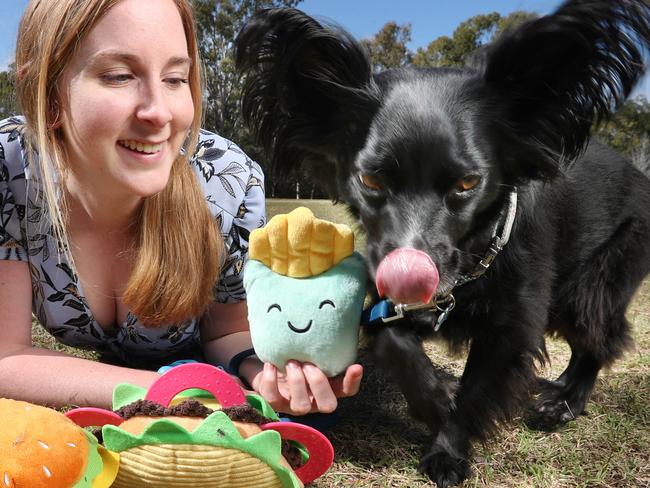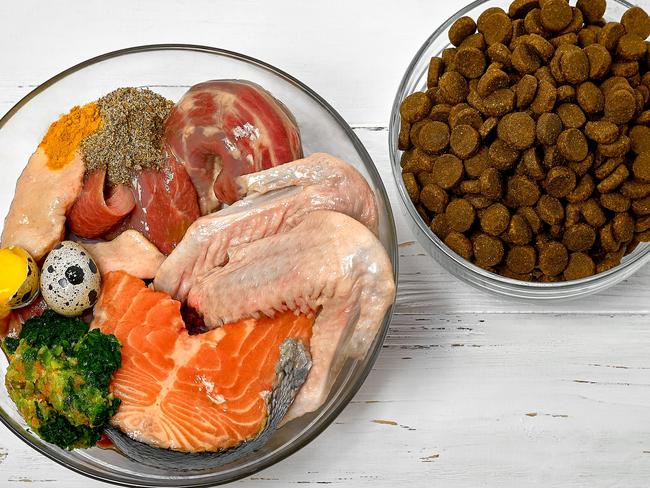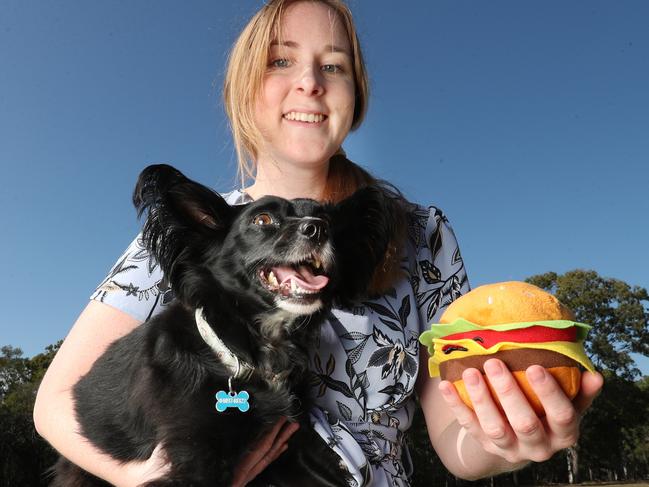Vet nutritionist reveals the pros and cons of different pet diets
A veterinary nutritionist helps pet owners break down the value of raw meat, homemade, processed and vegan pet diets to determine the best way to feed your cat or dog.
SmartDaily
Don't miss out on the headlines from SmartDaily. Followed categories will be added to My News.
- Five common job interview questions and how to answer them
- Bilingual moodle crowned Australia’s top dog
With pets outnumbering people and Australians now more likely to have a fur baby than a human baby, it is no wonder we are paying increasing attention to what we feed our dogs and cats.
But experts warn well-meaning pet owners not to be sucked in by pet nutrition fads.
Veterinary Nutrition Group Australia veterinary nutritionist Dr Meredith Wall says many owners mistakenly believe diets containing “healthy” foods or “superfoods” are automatically the best choice.
“An example of this is an owner feeding their dog a diet of cooked chicken breast, brown rice, coconut oil, kale, broccoli, sweet potato, spirulina, kelp, bone broth and blueberries,” she says.
“These ingredients are nutritious, however this diet would be harmfully deficient in many essential nutrients, like calcium and vitamin D.
“It is essential that the diet is complete and balanced.”

She also warns that just because a food or supplement comes from a plant does not mean it is safe for pets.
“Many plant-derived foods are toxic to dogs and cats, like macadamias, grapes and garlic,” she says.
“(Green tea extract) has been shown to cause severe toxicity and even death.”
Dr Wall – with three cats eating balanced, home-prepared diets plus canned foods, and a labrador eating a mix of canned, home-prepared, dry food and freeze-dried food – breaks down the pros and cons of some popular pet diets:
VEGAN
This diet contains no animal-derived ingredients, such as animal proteins, fish oil, gelatine capsules, dairy and eggs.
“Healthy adult dogs can be fed a vegan diet – however it is vital that the diet is formulated properly, otherwise serious deficiencies can result,” she says.
“We don’t recommend feeding a vegan diet to growing pups or to cats.”
HOMEMADE
Dr Wall says homemade diets can be very expensive as multiple supplements are often required.
“However it can be a good option for many pets, as the diet can be completely personalised to suit the individual animal’s needs and preferences,” she says.
“There is no evidence to suggest homemade diets are healthier than commercial diets, but many pets enjoy them and do very well on them.”

RAW MEAT
Despite their popularity, Dr Wall says these diets come with multiple concerns.
“The ‘prey model’ or ‘ratio’ raw diet promotes the feeding of 80 per cent muscle meat, 10 per cent bone, 5 per cent liver and 5 per cent other offal, however this often results in a diet that is deficient in many essential nutrients, such as vitamin E, manganese, vitamin D or choline,” she says.
“Feeding bones can result in dental fractures, oesophageal and intestinal damage or perforation, and constipation or obstipation.
“Raw diets can also contain pathogenic bacteria and parasites.”
PROCESSED
Dr Wall says all diets include some processed ingredients so pet owners should not assume processed foods are inferior to unprocessed foods.
“Like everything in the field of nutrition, it’s not that simple,” she says.
“Processing of some foods has been lifesaving, such as the fortification of wheat flour with folic acid to prevent birth defects, and the addition of iodine to salt to prevent goitre. “However, some types of processing can have drawbacks, (for example) removing the peel of fruits and vegetables can remove many vitamins and fibre.”
Similarly, Dr Wall advises against making assumptions about “natural” pet foods.
“As most pet food ingredients are derived from plant, animal or mined sources, many ingredients can obviously be termed ‘natural’,” she says.

Redcliffe’s Lydia Brackin feeds her fur baby Elijah a diet of gastro health biscuits and turkey mince.
The Chihuahua-Jack Russell Terrier mix was prescribed the low-fat diet after Miss Brackin, 26, took him to the vet three years ago with “tummy problems”.
“Changing his diet really helped and he loved it so it worked well,” she says.
“(For rewards,) we normally give him little beef jerky treats or dental sticks or reindeer antlers.”
HOW TO EASE A PET INTO A NEW DIET
DO transition them over a fortnight with increasing portions of new food – 20 per cent on day one to four, 40 per cent on day five to seven, 60 per cent on day eight to 10, 80 per cent on day 11 to 13, then 100 per cent on day 14
DO temporarily stop the transition if they experience vomiting or diarrhoea
DO see a vet if digestive issues continue
DON’T overfeed them during the transition
DON’T give too many treats, so they looks forward to meals
Source: Petbarn
